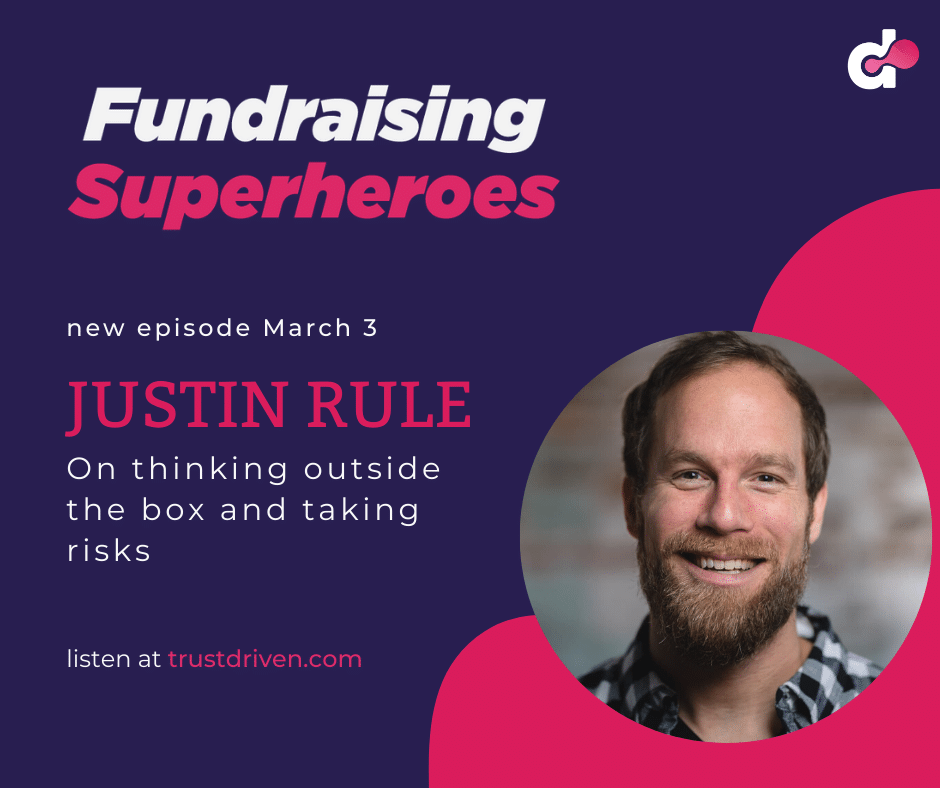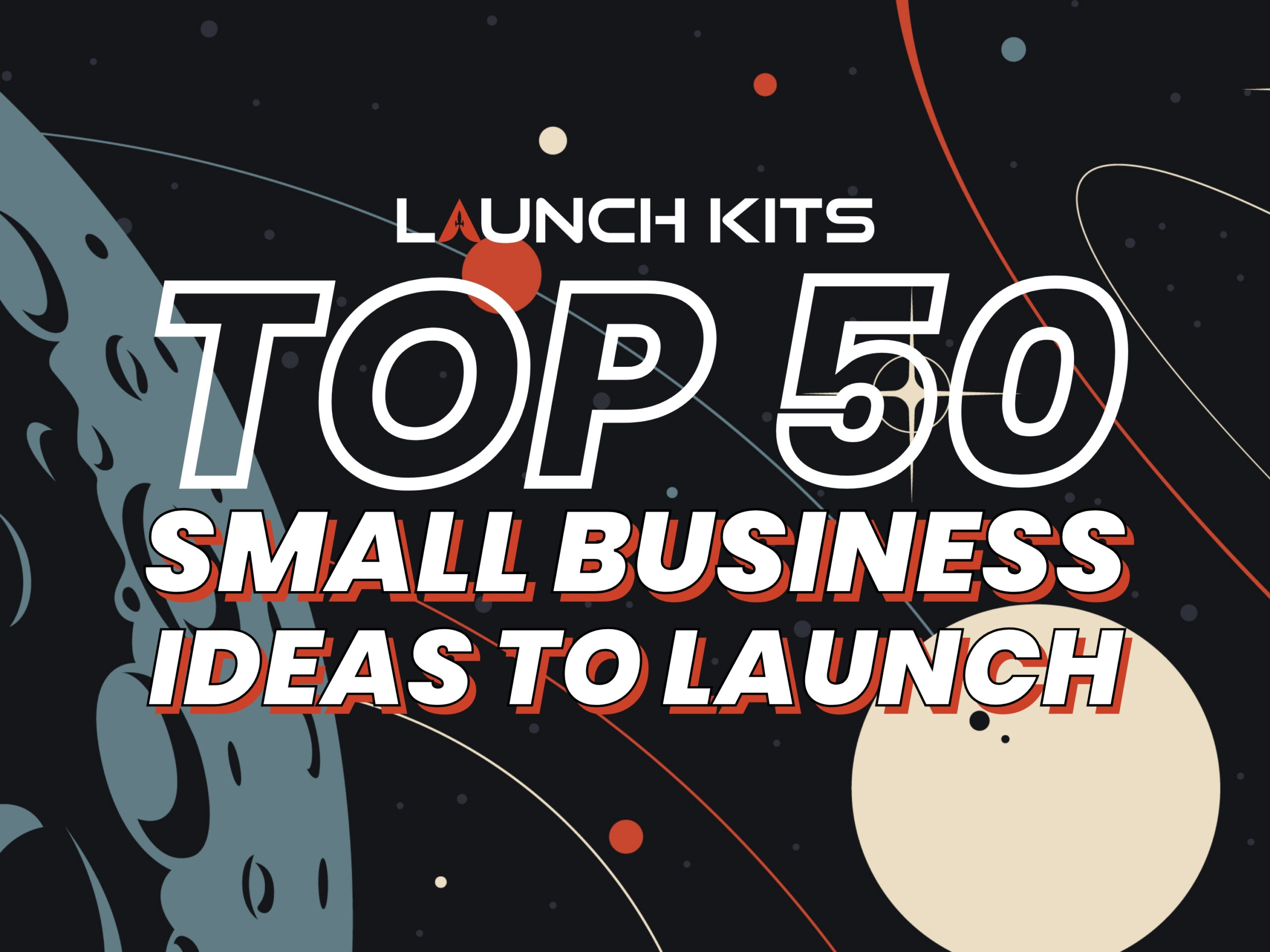As fundraisers, we’re always thinking of new, fun, and exciting ways to engage our audience. We are competing for our donors’ attention, so we have to stay on top of our games to keep them interested and engaged.
Join Driven Fundraising Superheroes host, Sabrina Sciscente, and Sparrow Websites owner and nonprofit advocate, Justin Rule, as they discuss how to leverage corporate marketing tactics for your nonprofit campaigns, how to let go and have fun with your fundraising, and how to connect with your community through collaboration.

Nonprofit Vs. For-Profit Sectors
It can be difficult for those who work in either the nonprofit world or the for-profit sector to find connections between the two. While each has its own unique challenges and advantages, experience in both areas can be an asset to how you approach your “business.”
Using a traditional business model
Justin didn’t always view nonprofits as businesses, but when he started to change that perspective, he quickly found growth and strategized his nonprofit.
“It’s been helpful to have been in both worlds and realize that there are similarities just in the same way that a business owner would really have no problem saying, “Hey, if you want my services, it costs this much money to work with me.”
“What I started to then learn is in the nonprofit sector, I am offering a service and it does have a value to it that is actually monetary. And so that really helped me change how I ask people to come alongside and support the nonprofit work.”
That mindset shift can be a game-changer for those working in nonprofits. Try thinking of your nonprofit as a transactional value exchange. You’re offering value, so don’t be afraid to make that ask.
Making your money work for you
For many nonprofits, events, projects, and other plans cannot happen until the funds for that specific goal are available. In for-profit businesses, they completed the work and then send an invoice for their time or services.
It can be challenging for nonprofit leaders to understand how to juggle that, because the reality is in the nonprofit sector, we know the work that we’re doing to benefit our community has to be done. And if we don’t do it, somebody else will.
So you almost have to change how you frame it and say, we’re going to do this thing and you have a chance to be a part of it. Try an approach of “we’re going to do it” instead of “please give us money so that we can do this.”
A Business Perspective For Fundraising
In the first few years at Heads Up Lancaster, Justin and the team relied on grants and foundation support to fund projects and their work. With that model, you are tied to following requirements and regulations around how you spend those funds. You’re locked in.
Because of that, it limits a little bit just how fast you can grow, how far you can reach, and what projects take priority over others.
How do we then validate the use of those funds? All those beautiful things that nonprofit leaders have to balance.
When Justin started getting back into the for-profit business world, he realized that he needed to start having more creative ways to fund the things he wanted to grow and expand.
The 300 project approach
Heads Up tried their hand as a new way to bring in funds: the 300 project. Because they had about 300 families in the school, they worked on rallying 300 donors to support the nonprofit every month. Each donor had the opportunity to support a family working with the nonprofit.
That monthly income allowed the team to have supplemental funds outside of just the grant and foundation funds that could go to other projects not tied to grants. They could then bring on a new staff member to start a new project or take an initiative to do a community mural because those funds weren’t tied to a grant and didn’t need to be justified.
Changing donor requests from a few donors giving large amounts to many donors giving a smaller amount allows more people to get involved and helps the nonprofit gain support on a much larger scale.
Story Telling With Will Smith’s Miami
While working with Heads Up Lancaster, Justin and the team broke the internet with their parodied version of Will Smith’s Miami to show the world how great their school is.
So how did that idea come to be? Why was it so successful?
“What’s the truth? What are the true answers to those questions? Well, I had a moped, which you see in the video at the beginning, and I was like, that was my daily driver to and from the school and way back in my whatever days. I just love rapping, singing, whatever, but I absolutely can’t dance, which the video proves. But as I began to really like, just hear what the students and teachers loved about themselves in the community, I can’t actually pinpoint the exact reason why that particular song jumped into my head. So I’ll give credit to a teacher, a student,” said Justin.
Justin got tired of doing so much work in the traditional ways and trying to get it out the “right” way (thinking annual events, traditional fundraisers, etc.), and then trying to share that passion with people. When he thought about the organization through art, music, and dance, all of those things captured what the organization was about.
So he thought, why don’t we just use those means and actually empower students’ voices rather than me saying something and telling their story?
Authenticity through participation
The students helped their team think of the words to the song and provided insight into each grade’s teacher’s nuances. By gaining students’ and teachers’ participation, the team could come together and create this fundraising tool that was a perfect representation of Heads Up.
An impact beyond measure
The impact that it had? It made everyone excited for people to get involved. It showed that the school was doing things differently.
These kids were different. These kids were talented. These kids have a voice that needs to be heard. Justin remarks, “I feel like God blessed that way more than we ever could have done in our own human efforts, it was kind of a little special thing.”
It made the process of fundraising and getting the community interest and involved a little more exciting than reading like a brief or a case statement about a nonprofit.
From Heads Up to Sparrow Websites
While working with Head Start, Justin also felt a pull to work in his own nonprofit while also starting a for-profit business, Sparrow Websites. How did it all come to be?
“I was working in my nonprofit and started working for a for-profit as well. And I met another guy named Adam, and we realized our passion was for nonprofits, startups, and entrepreneurs. And so we started to like think about do we want to maybe launch our own business later to be known as Sparrow.”
As this was all happening, Justing didn’t just want to launch a business. He wanted to stay connected to the city and do impactful work.
He came across a book by Calvin Coolidge at a yard sale of all places, and it was like a first edition, nineteen twenty-four book, The Price of Freedom. Justin says. “It was a total godsend that I picked up this book and read this right in the middle of the book.”
An essay that changed it all
There’s an essay that Calvin Coolidge wrote called, The Needs of Education. It says one of those things that just jumps off the page.
“To truly empower someone, it’s not just the intellectual empowerment, but it’s the moral development of an individual, too.”
Growing up, Justin’s parents always taught him and his siblings how to serve others. His parents often worked with ex-convicts and the homeless. As Justin got older, he realized some of the very real barriers that prevent these individuals from employment.
“They have barriers and there’s just a ton of stuff we take for granted going in and out of buildings or homes in business that they can’t do. So Adam and I really just stood over this Coolidge mentality of training both the intellect and the moral development of the soul. And Coolidge Academy was born. That’s what we called it. And the goal there was that we are doing what we know really well, which is digital media and design, and teaching that to people who don’t need a college degree.”
The idea of apprenticeship came to light at Coolidge Academy. Social media marketing, content marketing, and website design became their three offerings.
Justin jokes, “When you build a website for somebody or pitch it to somebody, nobody says your websites look amazing. But let me ask you something, Justin. Have you ever been in prison? That doesn’t happen, right?”
Conversely, if you’re like showing up to do a service in someone’s house, you may need to have a clean background check or you can’t really get hired by those companies.
At Coolidge Academy, Justin and Adam teach and empower individuals, refugees, and convicts, or people that couldn’t afford college and or maybe decided to prioritize raising children. Through their program, these individuals could actually learn some new things in an apprenticeship model.
The Biggest Lessons
And what was the biggest lesson Justin learned from it all?
“I feel like what I learned is God is bigger than my failures. And but I think if I were to sort of make it more palatable maybe to everyone, just depending on how they see or view the world around them. It’s like I’ve learned that my failures don’t define who I am and neither do my successes, define who I am.”
The first of those may be easy to grasp. We understand that sometimes we fail and miss. But understanding that our successes don’t define us can be hard. Learn to be confident in who you are and not necessarily get defined by what you do.
Connecting With Driven Fundraising Superheroes
Stay up to date with Sabrina and her team at Driven Fundraising Superheroes! You can follow them on social media, visit their website, and download their podcast today.






